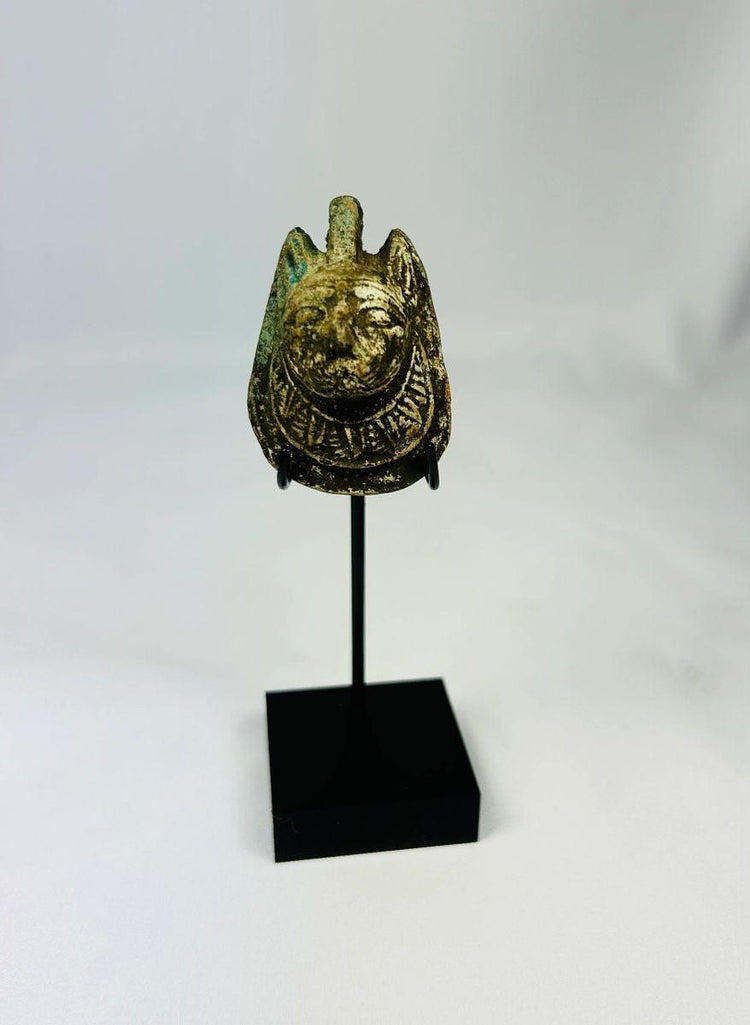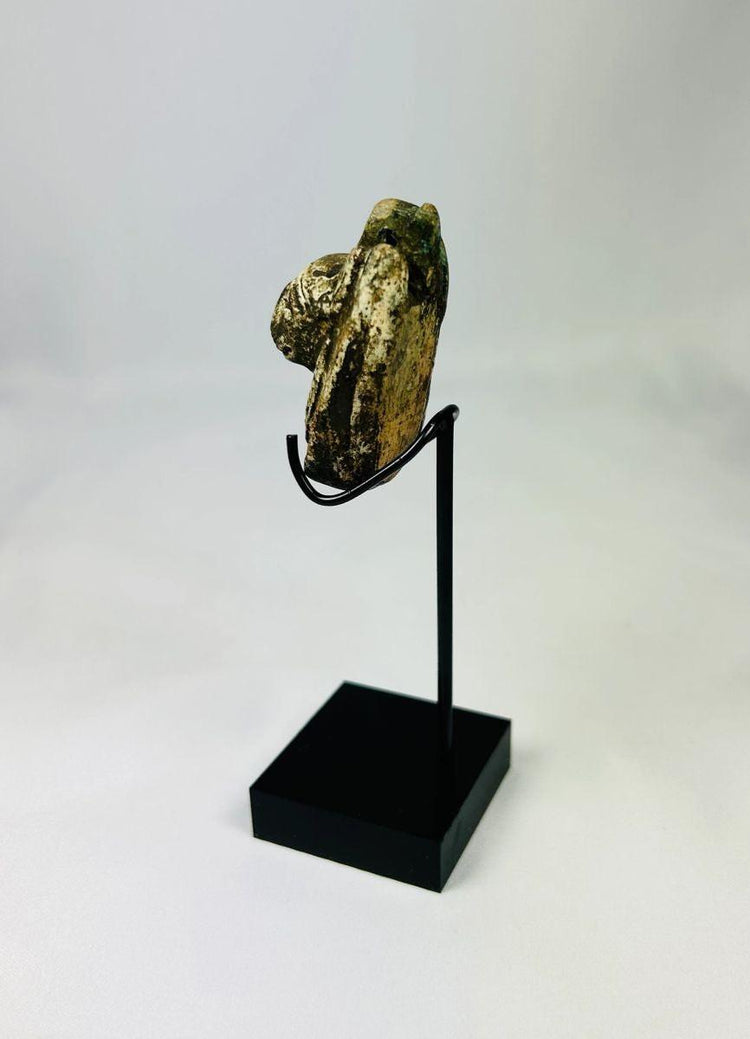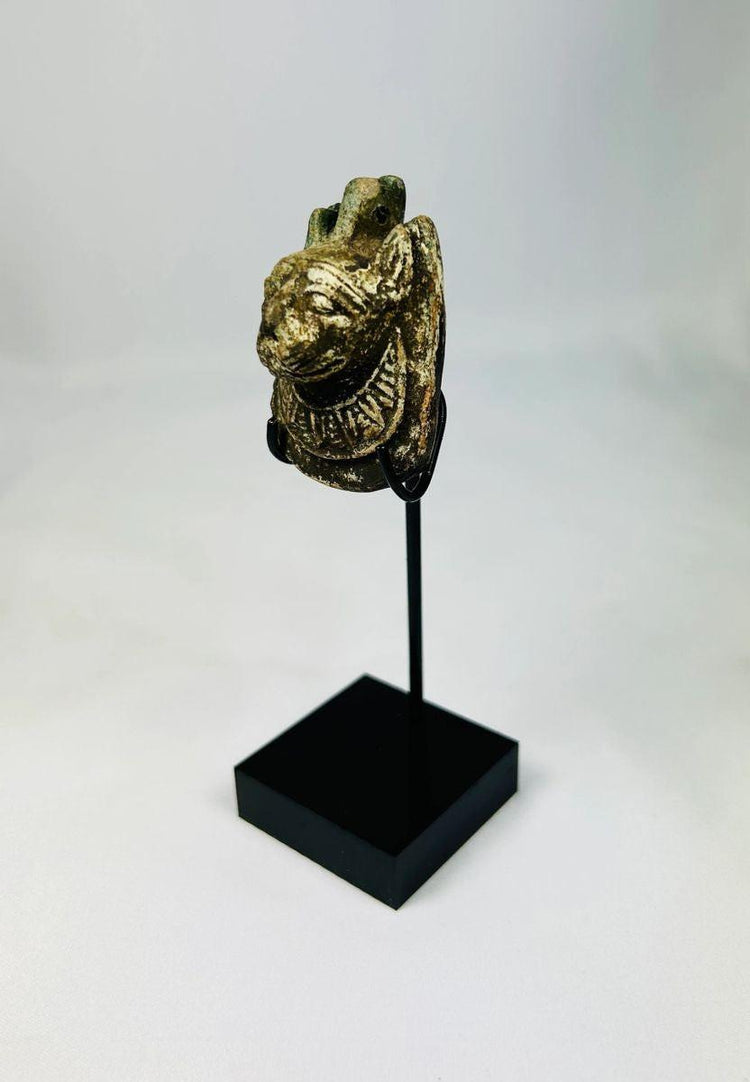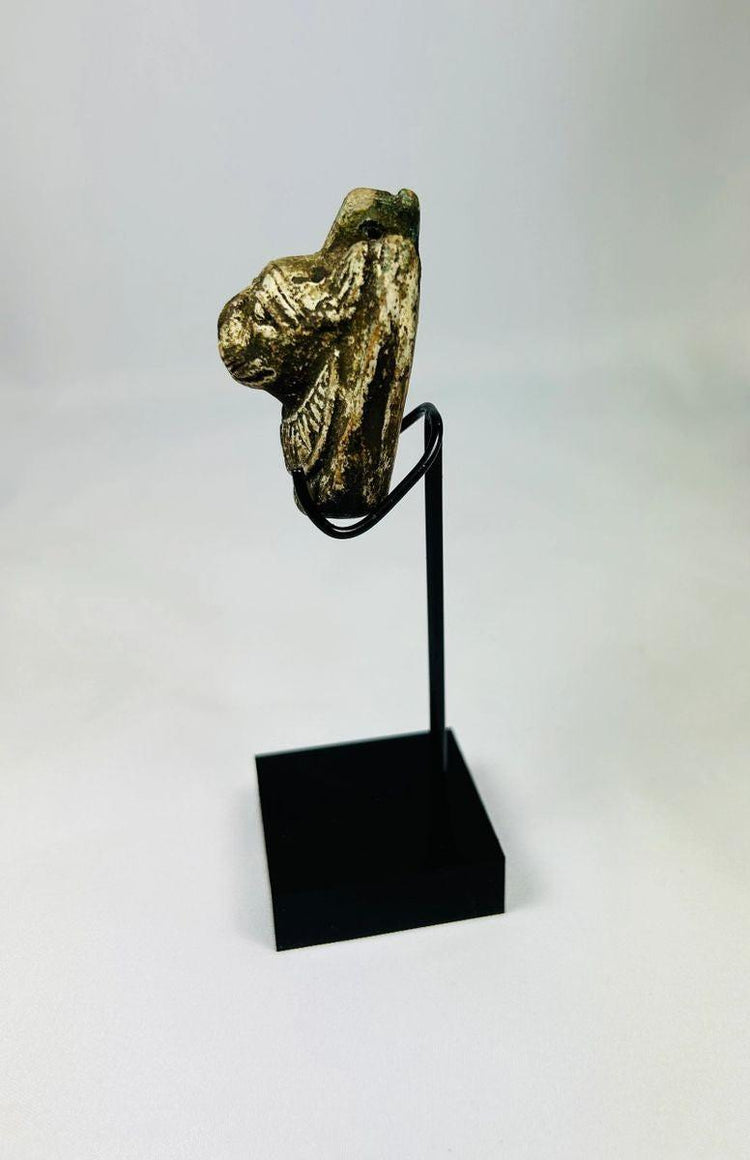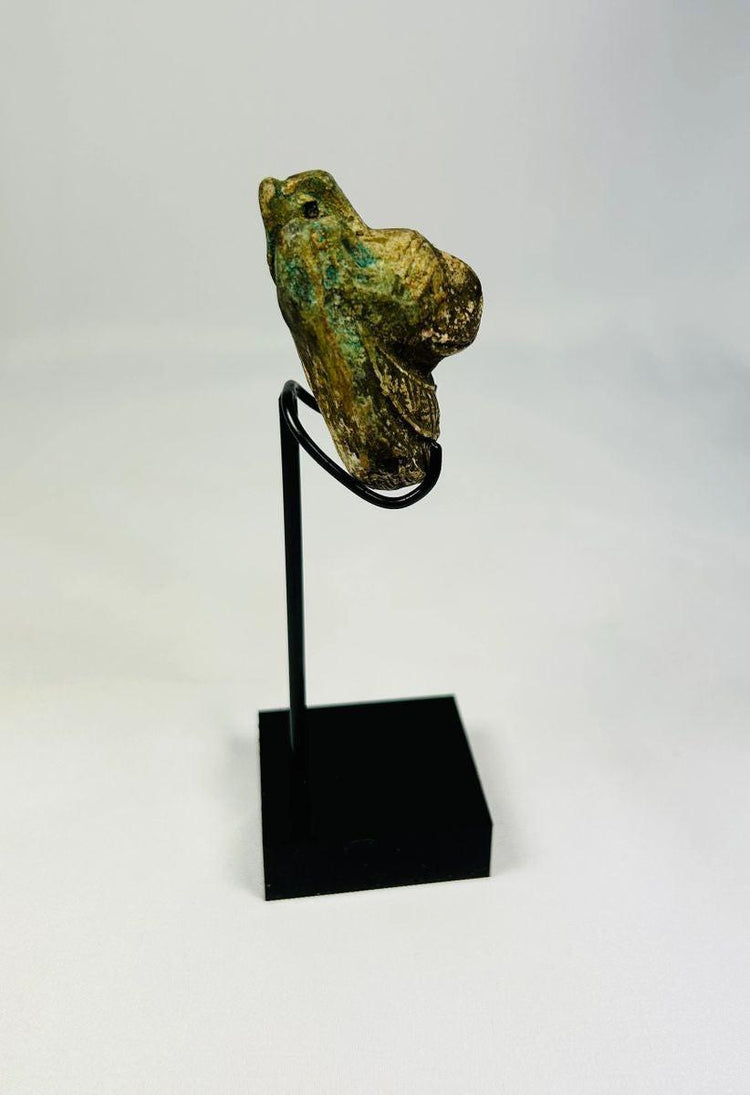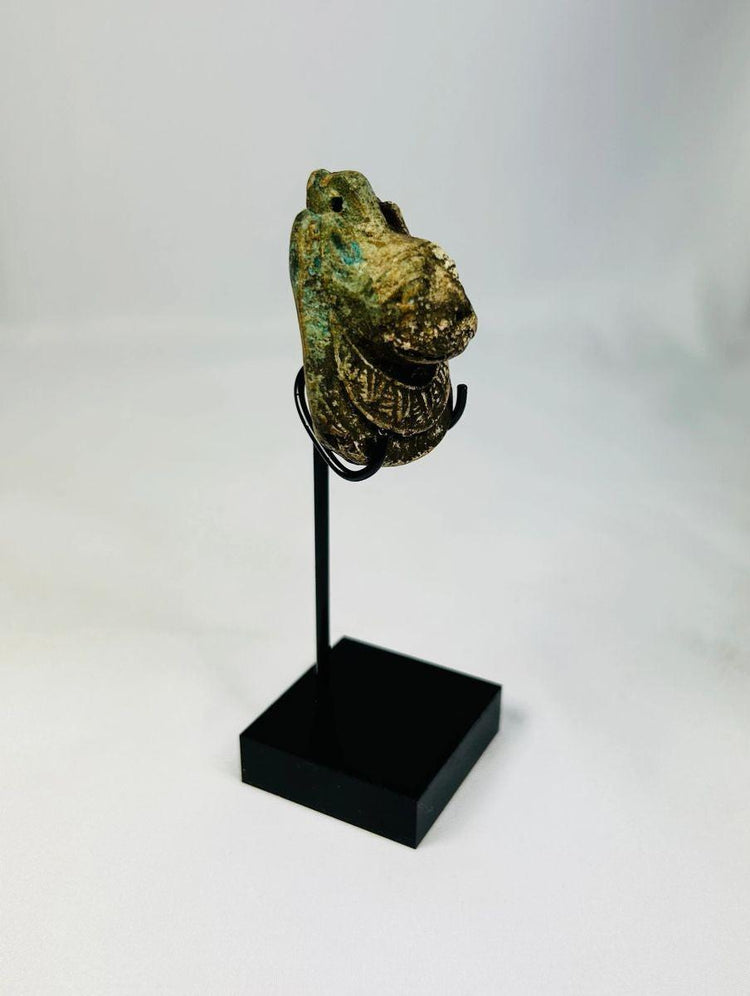Amulette égyptienne du dieu lion Maahes | Vers 1070 à 664 av. J.-C.
Description
Plus
Moins
Contexte historique et origine
Région : Égypte antique
Matériau : Pierre sculptée (forme d'amulette)
Période : Troisième Période intermédiaire, vers 1070–664 av. J.-C.
Description
Cette rare amulette égyptienne représente Maahes, dieu à tête de lion de la guerre, de la protection et du climat. Vénéré comme le fils de Ptah et des déesses félines Bast ou Sekhmet, Maahes incarnait la férocité et la protection dans le panthéon égyptien. L'amulette présente la divinité avec une tête de lion, symbolisant ses qualités protectrices et guerrières, et était probablement portée comme un charme personnel pour invoquer la force divine et sa protection au quotidien ou au combat.
Caractéristiques
- Figure à tête de lion symbolisant le dieu Maahes
- Forme d'amulette compacte pour la dévotion personnelle ou l'utilisation rituelle
- Détails fins conformes à l'art de la Troisième Période Intermédiaire
- Surface lisse avec des éléments sculptés préservés
Importance culturelle
Les amulettes de Maahes étaient particulièrement prisées durant la Troisième Période Intermédiaire, période politiquement instable, où l'Égypte était confrontée à des divisions internes et à des incursions étrangères. Divinité protectrice, Maahes était censée défendre les pharaons et le peuple, assurant la victoire à la guerre et la protection contre les menaces naturelles et spirituelles. Portée près du corps, cette amulette offrait un lien tangible avec le pouvoir divin, incarnant la confiance des Égyptiens envers les charmes protecteurs en période d'incertitude.
Condition
Excellent état, avec une représentation claire de la divinité à tête de lion et une légère usure due à l'âge. La surface reste lisse, préservant la présence symbolique de Maahes.
Dimensions (approximatives)
Hauteur : 2 po
Largeur : 1,75 po
Âge
Environ 2 700 à 3 000 ans
Description
Contexte historique et origine
Région : Égypte antique
Matériau : Pierre sculptée (forme d'amulette)
Période : Troisième Période intermédiaire, vers 1070–664 av. J.-C.
Description
Cette rare amulette égyptienne représente Maahes, dieu à tête de lion de la guerre, de la protection et du climat. Vénéré comme le fils de Ptah et des déesses félines Bast ou Sekhmet, Maahes incarnait la férocité et la protection dans le panthéon égyptien. L'amulette présente la divinité avec une tête de lion, symbolisant ses qualités protectrices et guerrières, et était probablement portée comme un charme personnel pour invoquer la force divine et sa protection au quotidien ou au combat.
Caractéristiques
- Figure à tête de lion symbolisant le dieu Maahes
- Forme d'amulette compacte pour la dévotion personnelle ou l'utilisation rituelle
- Détails fins conformes à l'art de la Troisième Période Intermédiaire
- Surface lisse avec des éléments sculptés préservés
Importance culturelle
Les amulettes de Maahes étaient particulièrement prisées durant la Troisième Période Intermédiaire, période politiquement instable, où l'Égypte était confrontée à des divisions internes et à des incursions étrangères. Divinité protectrice, Maahes était censée défendre les pharaons et le peuple, assurant la victoire à la guerre et la protection contre les menaces naturelles et spirituelles. Portée près du corps, cette amulette offrait un lien tangible avec le pouvoir divin, incarnant la confiance des Égyptiens envers les charmes protecteurs en période d'incertitude.
Condition
Excellent état, avec une représentation claire de la divinité à tête de lion et une légère usure due à l'âge. La surface reste lisse, préservant la présence symbolique de Maahes.
Dimensions (approximatives)
Hauteur : 2 po
Largeur : 1,75 po
Âge
Environ 2 700 à 3 000 ans
Vous aimerez peut-être aussi























